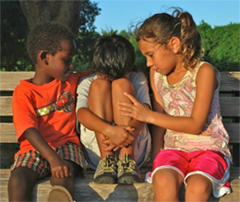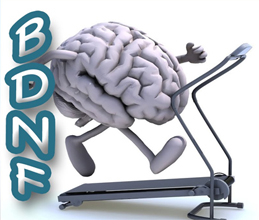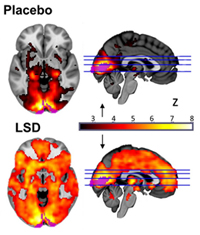Tuesday, 9 May 2017
Protect Your Immune System by Refusing To Be Dominated!

A study published in the November 25, 2016 issue of the journal Science shows that subordinate status in a social group seems to have harmful effects on an individual’s immune system. More specifically, this study found that a female rhesus monkey’s relative position in her group’s dominance hierarchy influenced the functioning of her immune system in the following way: the lower her rank, the fewer immune cells of a certain type her body produced.
And such differences seem to be caused by the activation or non-activation of certain genes. The study’s authors found that when they used experimental manipulations of the group to change individuals’ ranks in the hierarchy, the rate of expression of these genes changed as well. (more…)
Mental Disorders | Comments Closed
Thursday, 20 April 2017
Learning Empathy

The existence of empathy and altruistic behaviour among various species of animals has been amply demonstrated. Among elephants, examples include comforting members of the herd who are frightened, rescuing others when they get get stuck in mud holes, and adopting orphaned babies. Chimpanzees and bonobos display sophisticated altruistic behaviours in dealing with weak or disabled members of their troops, trying to help them stand, bringing them food, and covering them with vegetation after confirming that they have died.
The human species is no exception. We human beings depend so much on one another and our societies are so complex that our ability to put ourselves in someone else’s shoes, to feel what they are feeling and to act accordingly, is quite obvious. Ethologists and evolutionary biologists agree that in species that form complex societies in which cooperation and mutual assistance constitute an advantage for the entire group, empathy developed naturally. (more…)
Pleasure and Pain | Comments Closed
Wednesday, 22 February 2017
To Retain Information Better, Wait a Few Hours, Then Go for a Run!

The study that I want to tell you about today was done by Eelco V. van Dongen and his colleagues and is entitled “Physical Exercise Performed Four Hours after Learning Improves Memory Retention and Increases Hippocampal Pattern Similarity during Retrieval.”
This study’s findings can be summed up as follows: if you have just made a new mental association and want to remember it better, wait a couple of hours, and then go do some exercise! In van Dongen’s study, three groups of subjects performed a memory-encoding task. One group performed exercise immediately after, one did so four hours after, and the third did not perform any exercise at all. When the three groups were tested for their retention of the encoded memory two days afterward, the group that had exercised four hours after the task showed the best retention among the three groups. (more…)
Memory and the Brain | Comments Closed
Friday, 10 February 2017
You Don’t Catch a Ball by Calculating Its Trajectory, You Catch It by Moving

Today I’d like to talk about a problem that is a classic both for baseball players and for cognitive scientists. And the way that baseball players solve it has helped cognitive scientists to better understand the important role that the body plays in cognition.
The problem is as follows: how does a baseball player go about catching a baseball that has been hit high into the air, especially when the player is in centre field and the ball is following a long, parabolic trajectory that would otherwise cause it to land several metres from where the player is standing? How does the player go about calculating this trajectory and moving, in just a few seconds, to the right place to catch the ball? This is what has long been known in English as “the outfielder problem.” (If you’re more of a soccer fan, imagine a backfielder successfully heading a long throw-in by the goalkeeper.) (more…)
Body Movement and the Brain | Comments Closed
Monday, 9 January 2017
A First Brain-Imaging Study on the Effects of LSD

“This is to neuroscience what the Higgs boson was to particle physics.”
This eye-catching remark comes from neuropsychopharmacologist David Nutt, and he is talking about a study on which he was the senior researcher: “Neural correlates of the LSD experience revealed by multimodal neuroimaging”, published in the journal Proceedings of the National Academy of Sciences in April 2016. And like the results of the research on the Higgs boson, the results of Nutt’s study confirmed the theory—in this case, that the observed changes in brain activity would provide a very good picture of the mental state produced by an “acid trip”. (more…)
The Emergence of Consciousness | Comments Closed








